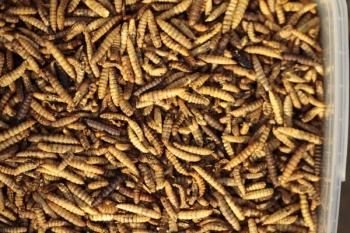
Journal Scan: Food for thought: Thiamine deficiency in dogs and cats
This review describes the clinical signs of thiamine deficiency, as well as causes, diagnosis, and treatment.
Why they did it
Despite improvements in the nutritional content of commercial pet foods, since 2009 there have been five major pet food recalls in the United States as a result of thiamine-deficient pet foods. This review describes the clinical signs of thiamine deficiency, as well as causes, diagnosis, and treatment.
Thiamine functions and signs of thiamine deficiency
Thiamine (vitamin B1) is absorbed from the diet via the small intestine and is a key component of effective carbohydrate metabolism. For this reason, tissues with high energy requirements such as the brain can be severely affected by thiamine deficiency. The absence of thiamine can also lead to a buildup of lactate in the body and result in acidosis. Cats require three times the amount of thiamine that dogs do, making them especially sensitive to thiamine loss.
Clinical signs of deficiency can take days to weeks to manifest and may begin with nonspecific gastrointestinal signs such as anorexia, weight loss, and vomiting. Cervical ventroflexion (cats), anisocoria or mydriasis, and decreased pupillary light reflexes will become evident the longer the deficiency remains uncorrected. Electrocardiographic abnormalities may also be noted.
Intrinsic factors such as malabsorptive intestinal disease may decrease the ability to absorb thiamine from the diet, while use of medications such as diuretics can lead to increased thiamine loss in the urine. Pets fed unconventional diets (i.e. raw food or home-prepared diets) are more susceptible to thiamine deficiency, while pets receiving high-carbohydrate diets may experience a problem because of the high demand for thiamine required for carbohydrate metabolism and subsequent thiamine depletion. Canned diets may be more prone to being deficient in thiamine because of the high heat required for processing, while dry foods that are exposed to air, humidity, or heat will also lose thiamine content.
Diagnosis and treatment of thiamine deficiency
Several forms of thiamine exist in the body, and measuring thiamine concentrations can be problematic since the tests are not offered by all commercial laboratories. Routine laboratory parameters are typically normal in these cases but are necessary to rule out issues such as electrolyte abnormalities and metabolic disturbances. Two tests are commonly used for assessing thiamine status—the erythrocyte transketolase activity assay and high pressure liquid chromatography. Often thiamine deficiency will need to be diagnosed based on clinical signs, supportive dietary history, and response to empirical therapy.
Treatment will require parenteral administration of thiamine for three to five days followed by oral therapy for two to four weeks. Avoid intravenous administration of thiamine because of concerns with hemodynamic effects such as hypotension and arrhythmias. Dosages for parenteral administration are variable, but “doses described for clinical cases range from 25 to 150 mg in cats and 100 to 600 mg in dogs.” The authors of this report typically use 50 to 100 mg every 12 hours for cats. Response to therapy can be rapid, but patients with severe neurologic signs may have residual deficits.
Take-home message
Treatment of pets suspected of having a thiamine deficiency should not be postponed for lack of a definitive diagnosis. A thorough nutritional history will be key in determining thiamine deficiency as a cause of the clinical signs.
Markovich JE, Heinze CR, Freeman LM. Thiamine deficiency in dogs and cats. J Am Vet Med Assoc 2013;243:649-656.
Newsletter
From exam room tips to practice management insights, get trusted veterinary news delivered straight to your inbox—subscribe to dvm360.






